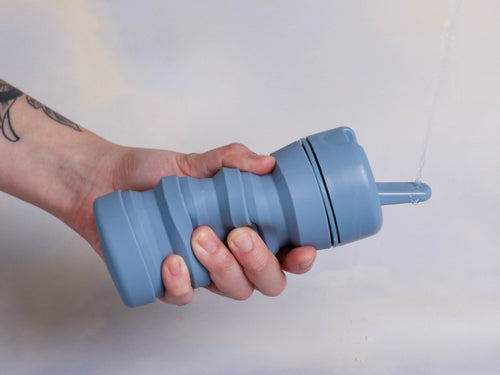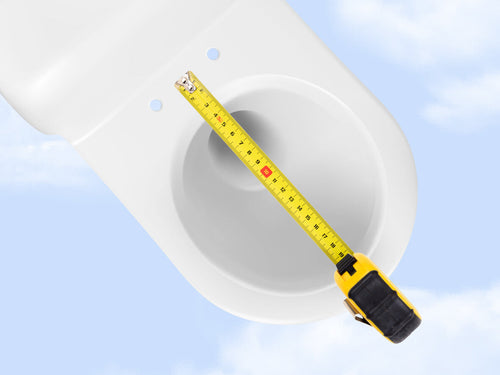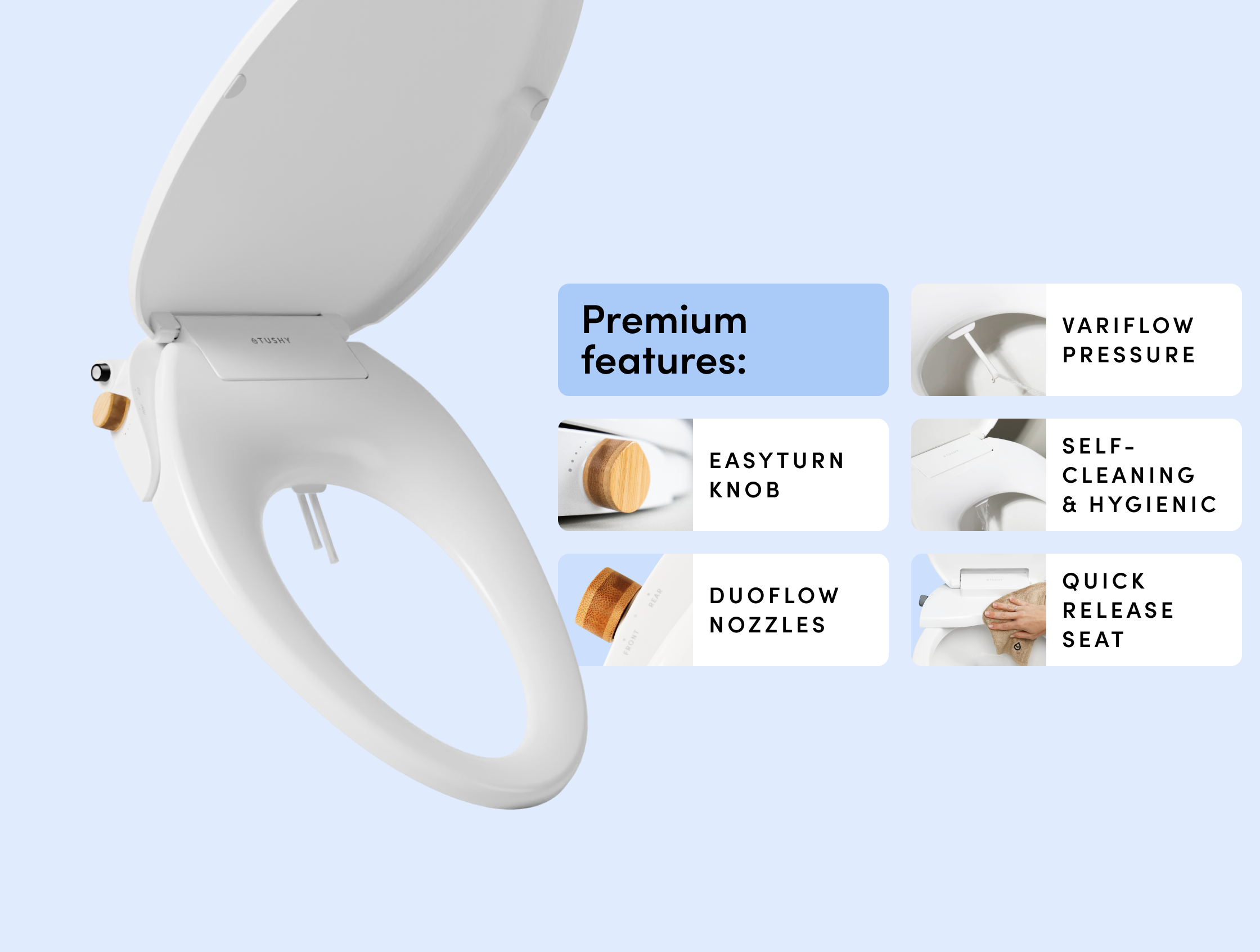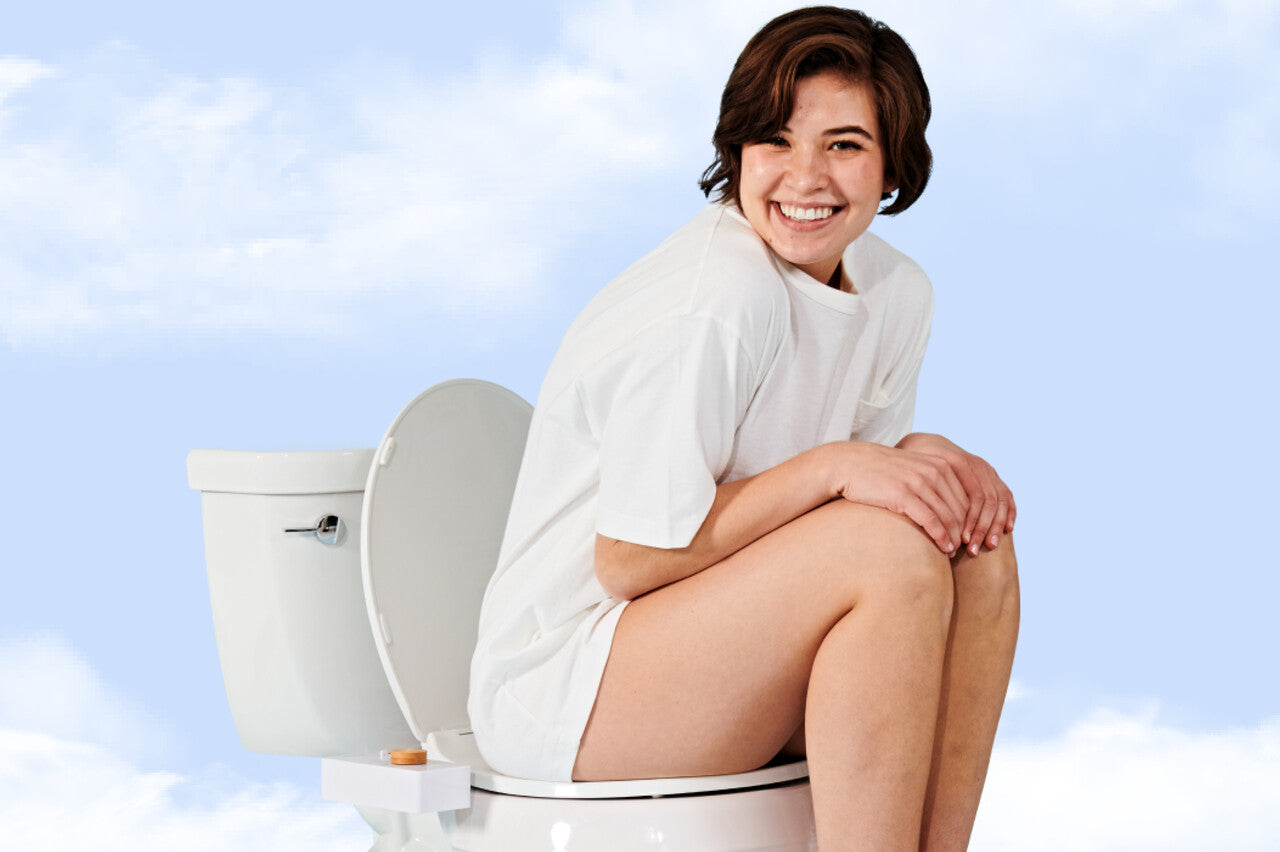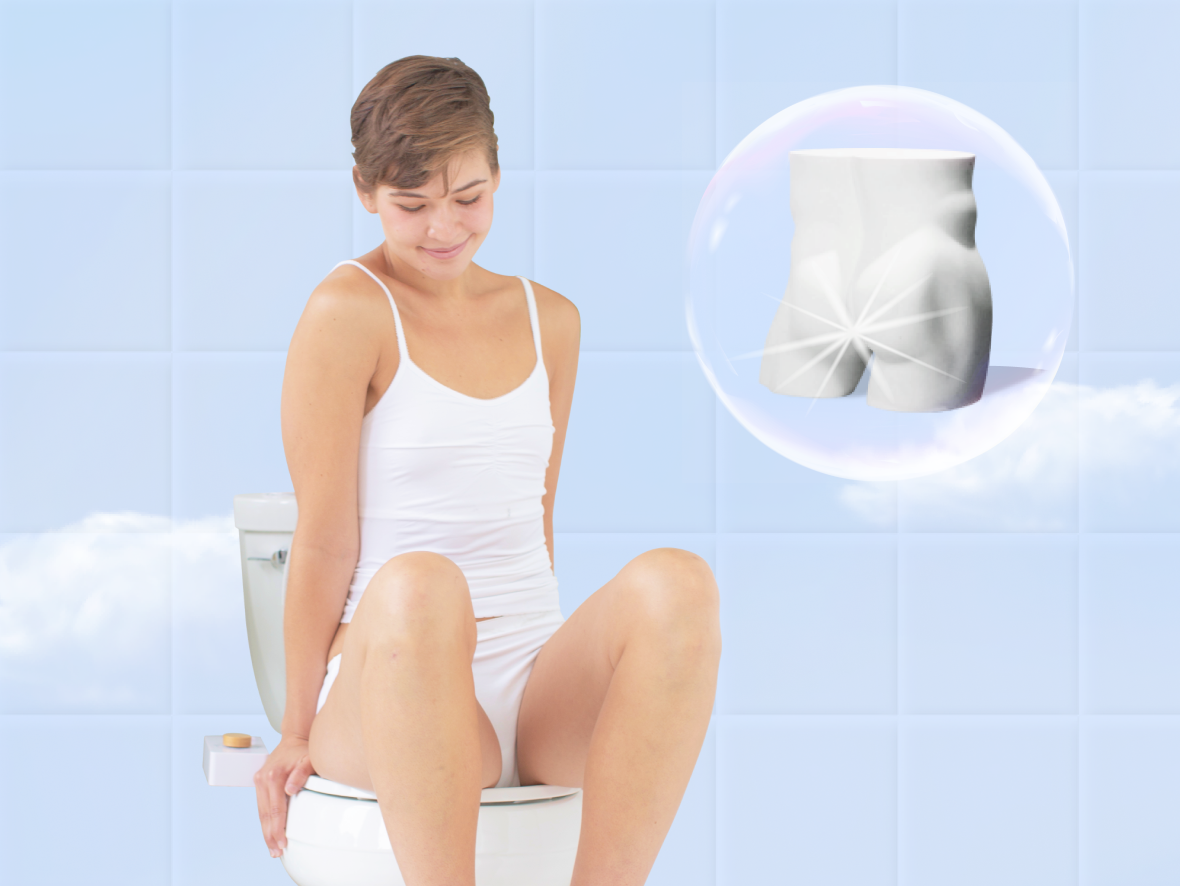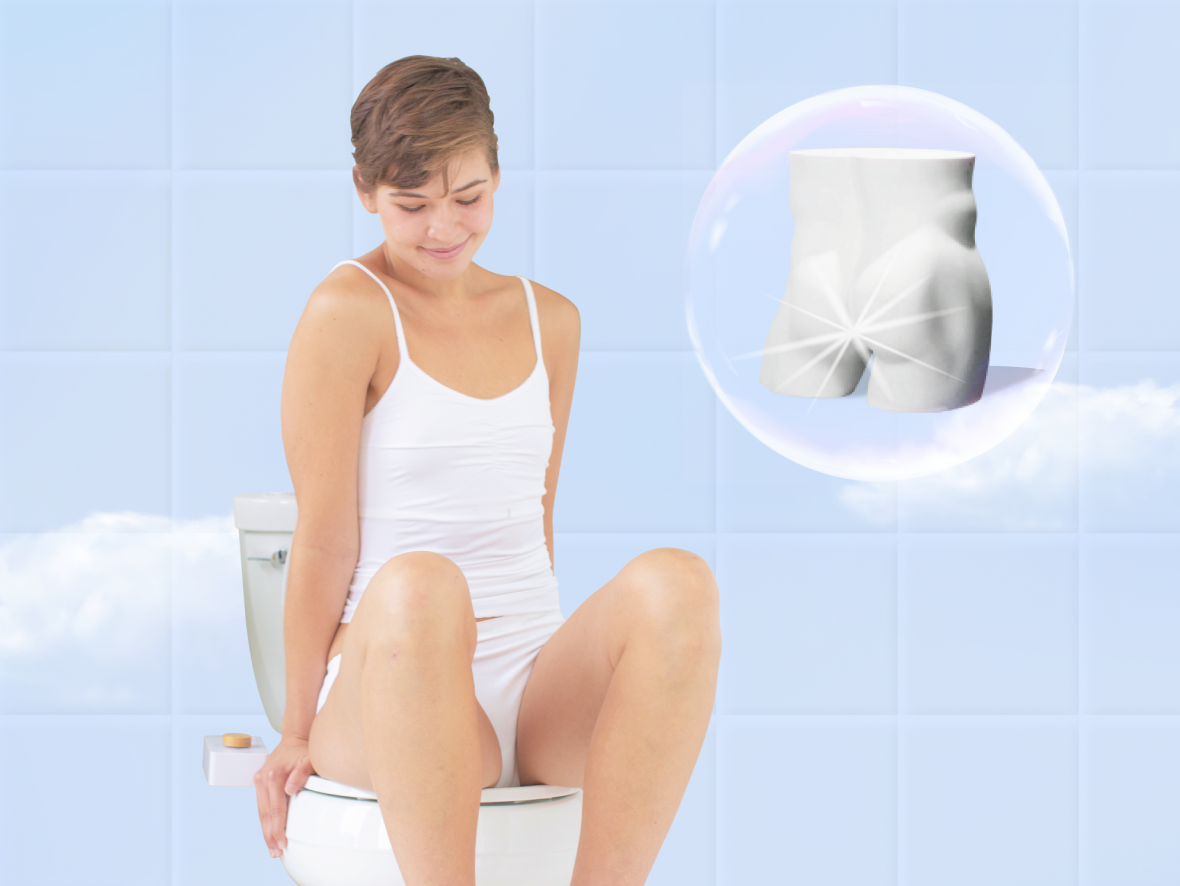We roll our eyes at the co-worker with the medical-grade ergonomic chair and desk treadmill. But they probably have a high-functioning butt.
It’s wild to think about how much life happens in a seated position. From car commutes to office jobs to couch and toilet time, we’re on our butts way more than our glutes can stand. The outcome? A higher risk of developing Dead Butt Syndrome.
100% sounds like a toddler named it, yes. But DBS is legit and can affect your overall health. Here’s everything you need to know about the disorder, including how to save your precious buns.
What is Dead Butt Syndrome (DBS)?
PSA: No butts actually perish from Dead Butt Syndrome. This condition, also known as gluteal amnesia, refers to weakened gluteal muscles as a result of prolonged sitting.
The glutes’ biggest job is to keep your body upright and push it forward. Using your butt as a glorified pillow decreases this muscle functionality, which affects the stability of your pelvis as well as your body’s overall alignment.
Keep reading (maybe while standing?) to find out if that stiffness in your bottom is actually Dead Butt Syndrome.
Causes of DBS

Inactivity is the root cause of DBS. Our bodies aren’t designed to lounge around all day like a house cat. Circulation, digestion, and muscle function all depend on movement. So when we live a sedentary lifestyle, our muscles compensate.
Hip flexors stiffen. Glutes lengthen. Range of motion restricts and muscles don’t activate like they should.
So does this mean active butts are living their best lives? Not necessarily. Even if you exercise often, failure to stretch before and after can lead to hip and glute muscle tightness. Performing an exercise incorrectly can also contribute to DBS, especially if you’re not using the right muscle groups.
Symptoms of DBS
If you’ve ever brought your phone in the bathroom for a long “poop” session, you’re probably familiar with that tingling feeling when your butt and legs go to sleep. Similarly, dead butt syndrome feels like that numbness or soreness in the butt and hip areas. You may also feel pain and cramping in other areas, including your lower back and legs.
Because everything’s connected, your butt can impact your hips, which can impact your abdominals, which can impact your back. Weakened glutes can also cause issues with posture and balance, resulting in foot pain, knee injuries, and pelvic instability. Especially while climbing stairs and exercising.
Signs You Might Have Dead Butt Syndrome:
- Shooting pains down your legs.
- Swelling of the hips.
- Pain in your calves.
- Numbness in your butt.
- Tightness in the thighs.
- Pain and stiffness in your lower back, hips, and knees.
2-Step Dead Butt Syndrome Check:
- Lie face up with your feet on the floor.
- Keeping your ankles below your knees, lift your hips until they’re level with your knees.
Feel tension in your hamstrings or lower back? You may have DBS.
How to Combat Dead Butt Syndrome

Fortunately, you do NOT need a butt transplant! There are ways you can treat a “dead” butt without any type of medication or surgery. The solution begins with making the following adjustments in your daily routine.
Proper Sitting Posture
Just like there is a proper position to poop, there’s a proper position to work. To start, take a look at how you’re sitting. If you’re hunched over your laptop on a couch or slumped over a low monitor at the office, it’s time to upgrade your workspace. Ergonomic chairs, desks, laptop stands, and lamps make a huge difference.
Improper posture can misalign your spine and cause several other problems with your joints. The ideal sitting position is with both feet on the floor, shoulders relaxed, and elbows at your sides between a 90 and 120 degree angle. Additionally your chair should be well-cushioned to support your hips, thighs, and back.
Anyone who plans to sit for several hours throughout the day for work needs a solid back and butt support system.
Daily Stretching
Stretching isn’t just for exercise warmups! Incorporate stretching into your daily routine safely activates your muscles for movement. Get up for about 5 minutes or so per hour to do some leg stretches at your desk. A helpful alternative: get a standing desk. Not only can it help prevent gluteal amnesia, but studies show it can also boost productivity.
Increased Activity
Since muscle stiffness and limited blood circulation are results of prolonged sitting, the key is to get active. (This means you’ll need to take an actual lunch break to get those buns moving!)
Consider walking to a lunch spot near your office. If you work from home, walk the dog or go outside for a stroll around your neighborhood. The more you move, the happier your glutes!
Hourly Reminders
It’s easy to get lost in work and hunch your body for hours on end. Factor in meetings and your butt becomes a comatose ham steak. Here’s a simple fix: Set a reminder once an hour to get up, stretch, and walk around.
You can also do stealth glute squeezes throughout the day as well as calf raises and leg stretches to warm up tissues and wake that booty up.
Exercises to Activate Your Glutes
Although there are ways to treat gluteal amnesia, taking preventative measures is the best way to go. The glutes play a major role in balancing the pelvis and stabilizing the hips and spine. In other words, build a butt of steel.
Here are a few equipment-free workouts you can do at home to target and strengthen the glutes.
Lunges

Lunges condition core muscle groups in the lower body, strengthening your glutes, hips, and thighs.
- Start by standing with your feet together and hands on your hips.
- Take a large step, one foot in front of the other, dropping your body straight down so that your front knee stays behind the toe. Lowering and raising your body in this position is one lunge.
- Repeat for 10 reps to get the glutes warmed up, then switch legs and repeat.
Squats

Squats work ALL of your glute muscles (and your lower back…and your calves) while remaining low-impact on your joints.
- Take a wide stance and sit back as if you were lowering into a chair.
- Make sure your knees stay behind the toes and your chest is up (you can keep your hands out in front for balance).
- Repeat for one or two sets of 10 reps to fire up those butt muscles. (Squats can also help relieve constipation!)
- If balance is an issue, you can perform squats over a couch or chair for added peace of mind.
Donkey Kicks

Donkey kicks are great glute exercises for people who struggle with bending while standing.
- Start down on all fours, hands directly in line with your shoulders and knees in line with the hips. Make sure your back is flat and your abs are pulled in tight.
- Lift one leg, keeping your knee bent in a 90 degree angle and foot parallel to the ceiling. To maintain balance, you’ll naturally have to squeeze your gluteal muscles.
- Hold this position for a few seconds, then lower and repeat with the other leg.
Glute Bridges

Lazy floor exercises are where it’s at. Glute bridges support hip extension while involving the hamstrings.
- Lay down flat on your back, hips bent, knees bent, and feet on the floor.
- Keeping your hands by your sides, lift your butt off the ground and hold it up for a few seconds.
- Slowly lower it back down as 10–12 reps.
Lateral Leg Lifts

Lastly, you’ll want to work those hip flexor muscles!
- Lay down on your side, propped up on your elbow.
- Take the top leg and lift it straight up and down without touching the other.
- Repeat this movement for 10–12 reps and switch sides.
Keep in mind, you should feel the glutes working in each exercise. If not, you may be doing it incorrectly.
Butt Still Feeling “Dead” After Activity?
Remember that bringing deconditioned muscles back to life takes significantly longer than maintaining healthy muscles. Be patient and try increasing your reps.
Even the way you sleep can add to the weakness of your glute muscles. If you typically slumber on your side in the fetal position (basically a suspended chair pose!), try stretching out to lengthen those leg muscles.
In the meantime, padded toilet seats, hot and cold compresses, and a warm water bidet can add some relief to a sore, stinging bum. If your DBS symptoms persist or worsen after a couple months of activity, talk to your doctor.
Frequently Asked Questions
How long does it take to fix DBS?
It can take two to three months to see improvements depending on how significant your Dead Butt Syndrome is. Remember that even though progress isn’t overnight, living a less sedentary life improves your entire health.
Can DBS affect more than just your butt?
Yes! Because your glute muscles are responsible for the stability and momentum of your entire body, Dead Butt Syndrome can manifest as pain or stiffness in your hips, feet, knees, and back. When you are sedentary for long periods of time, your muscles compensate––tightening and lengthening to accommodate sitting vs moving.
Can Dead Butt Syndrome be prevented?
100%. Maintaining a more active lifestyle is the best way to prevent DBS. It can be as simple as going for a 5-minute walk every hour at work or performing glute squeezes at your desk. Good desk posture, daily stretches, and booty-strengthening exercises such as squats can also help ward off Dead Butt Syndrome.




